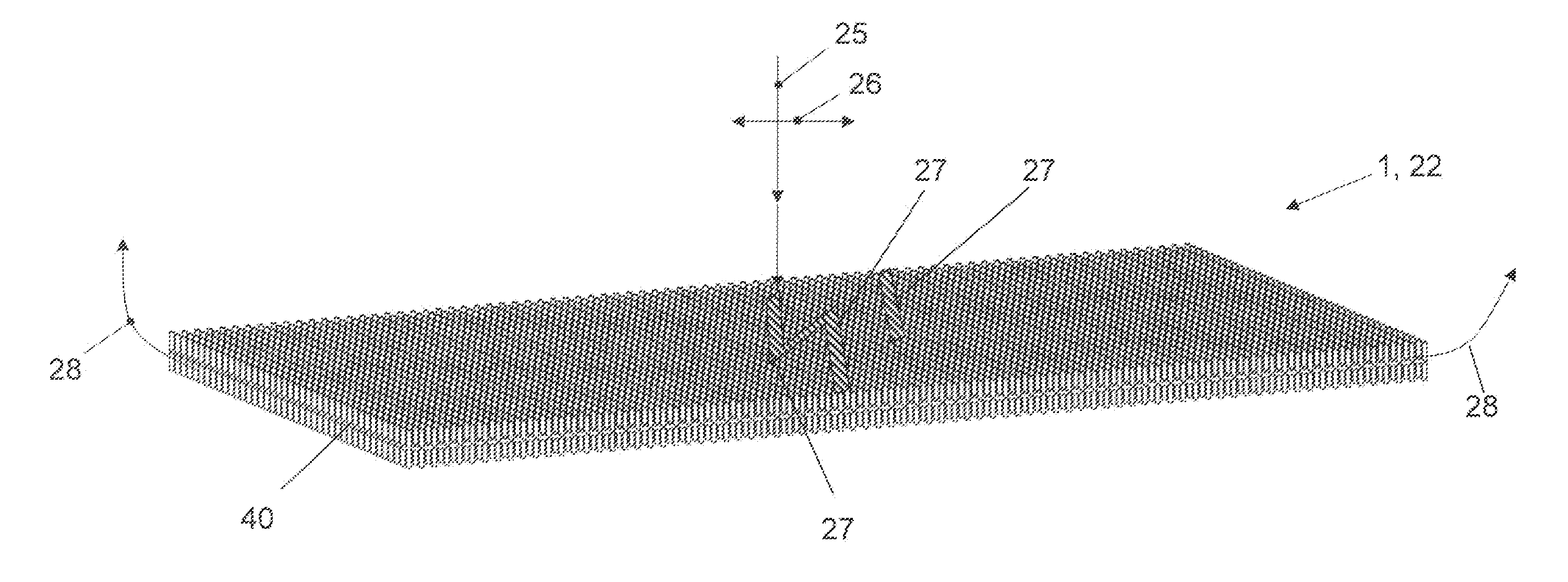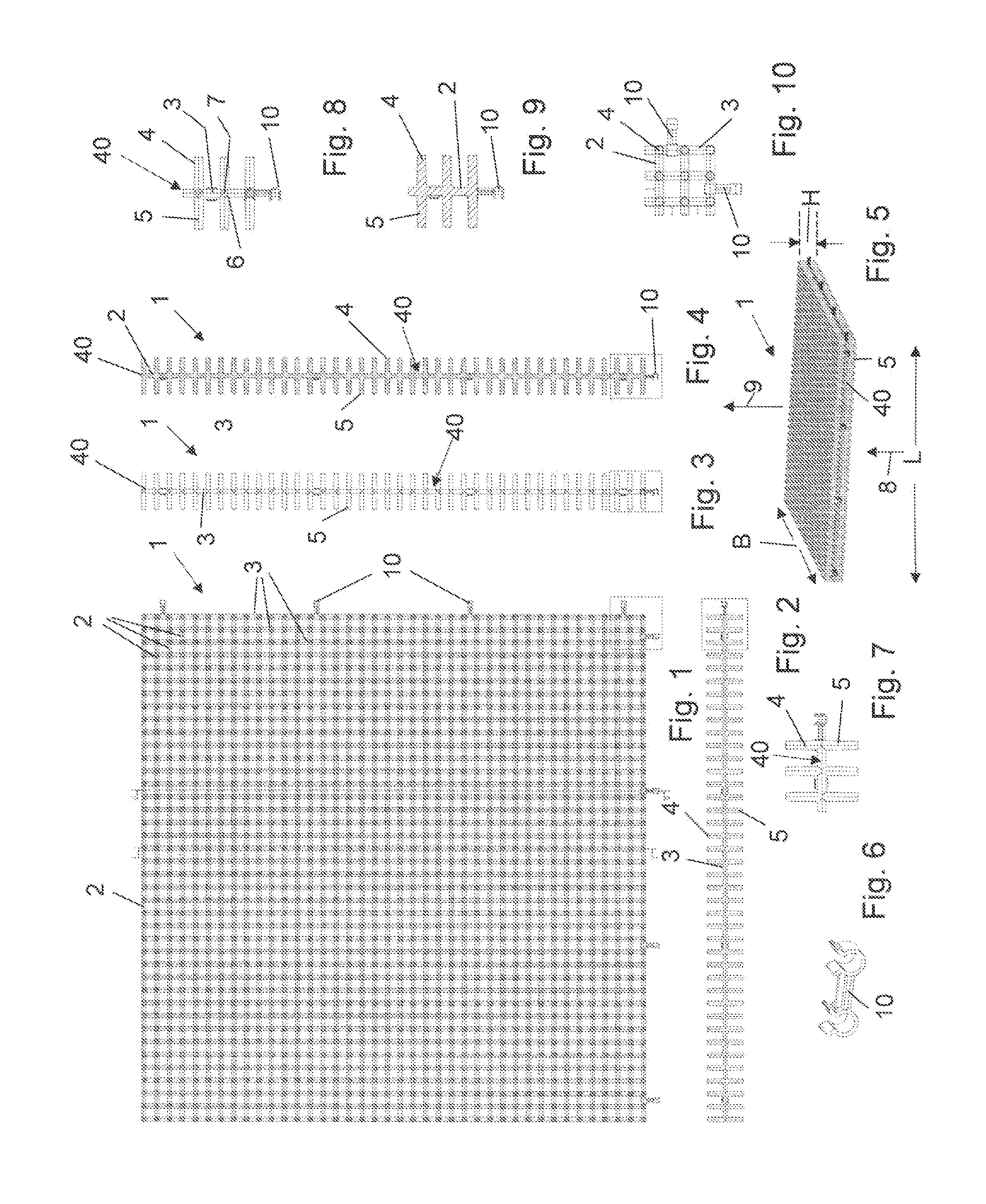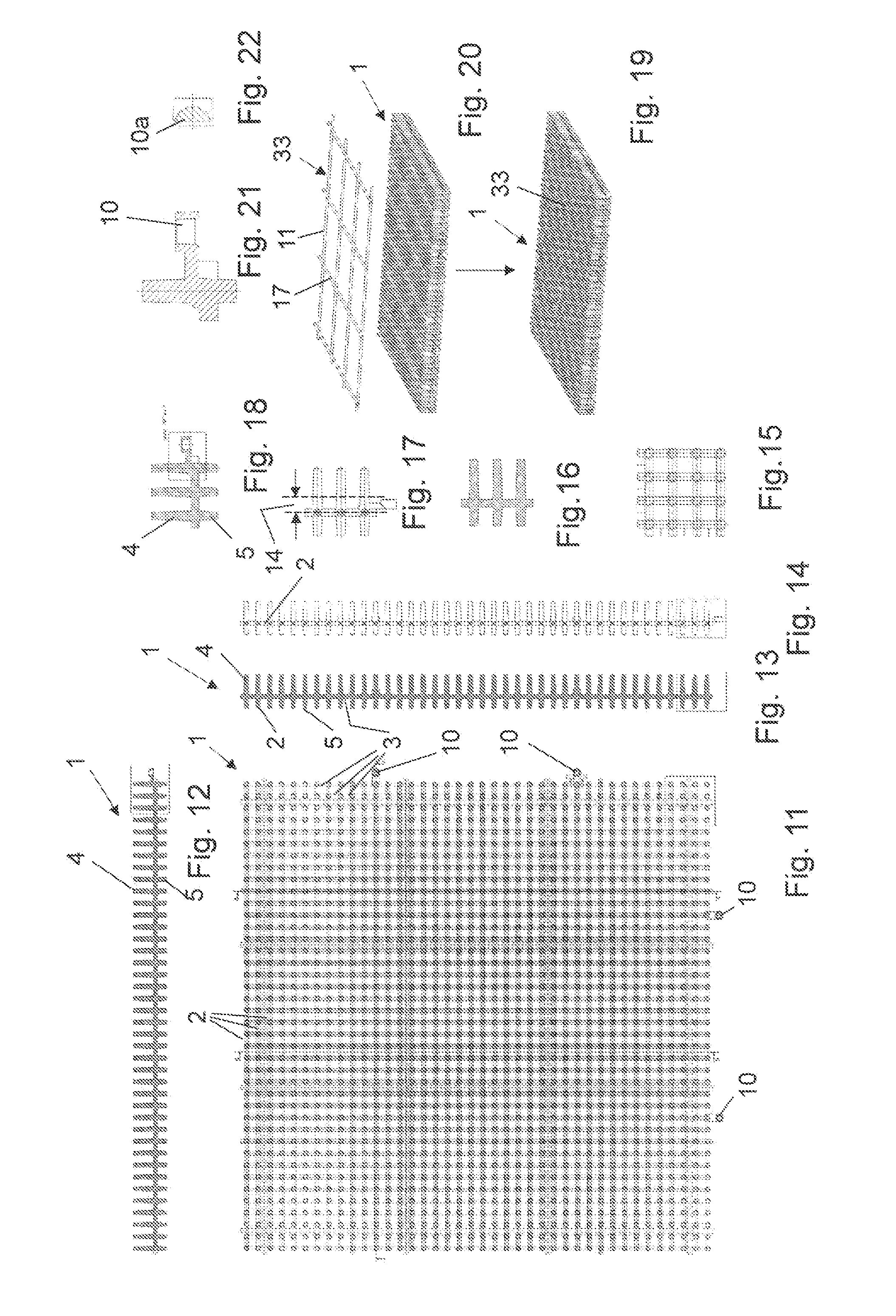Light-conducting component for constructions and buildings and also production process therefor
a technology of construction and building, which is applied in the field of light-conducting components, can solve the problems of relatively labor-intensive production of the entire multi-layer composite construction element, and achieve the effect of reducing the cost of production
- Summary
- Abstract
- Description
- Claims
- Application Information
AI Technical Summary
Benefits of technology
Problems solved by technology
Method used
Image
Examples
first embodiment
[0006]In a first embodiment the light-conducting pegs are produced in one piece in an injection molding die together with a light-conducting element formed as a lattice mat. This means that the injection molding mass in an injection molding die consists of a light conducting plastic and a flat support mat, consisting of intersecting and bonded longitudinal and transverse rods, is present in a (preferably) single injection molding process, at whose intersection points the light-conducting pegs protruding in a vertical direction from it are molded-on. Particularly simple production of an integral part is thus obtained, since this part in a subsequent work step is inserted into a casting mold and provided in alternation initially with a one-sided or two-sided insulation and / or reinforcement and then cast with a curable filling compound so that only the light-absorbing and light-emitting faces of the light-conducting pegs are still recognizable on the opposite flat sides of the board so...
second embodiment
[0008]In a second embodiment the lattice mat also consists of longitudinal and transverse rods intersecting in a plane, but in which the light-conducting pegs are not molded onto the intersection points of the longitudinal and transverse rods but into the openings between the longitudinal and transverse rods.
third embodiment
[0009]In a third embodiment a two-stage injection molding process occurs, in which a lattice element or support mat is initially produced in a first step and the light-conducting pegs in a second step are molded onto selected points ((either at the intersection points of a lattice mat or the openings of a support mat (preferably not formed as a lattice) or lattice mat forming a framework)).
[0010]Aspects of the concept here are that the light-conducting element is formed from a light-conducting construction material (for example, PMMA plastic or glass) as self-supporting 2D or 3D lattice element from rods with a thickness / diameter greater than or equal to 1 mm, the self-supporting 2D or 3D lattice element having roughly the same or only slightly smaller width W or length L or base dimension W x L or total outside dimension W×L×H than the casting mold itself in which the light-conducting component was produced.
[0011]A molded element with light-conducting pegs embedded in it is disclos...
PUM
| Property | Measurement | Unit |
|---|---|---|
| Flexibility | aaaaa | aaaaa |
| Shape | aaaaa | aaaaa |
| Electrical conductor | aaaaa | aaaaa |
Abstract
Description
Claims
Application Information
 Login to View More
Login to View More - R&D
- Intellectual Property
- Life Sciences
- Materials
- Tech Scout
- Unparalleled Data Quality
- Higher Quality Content
- 60% Fewer Hallucinations
Browse by: Latest US Patents, China's latest patents, Technical Efficacy Thesaurus, Application Domain, Technology Topic, Popular Technical Reports.
© 2025 PatSnap. All rights reserved.Legal|Privacy policy|Modern Slavery Act Transparency Statement|Sitemap|About US| Contact US: help@patsnap.com



